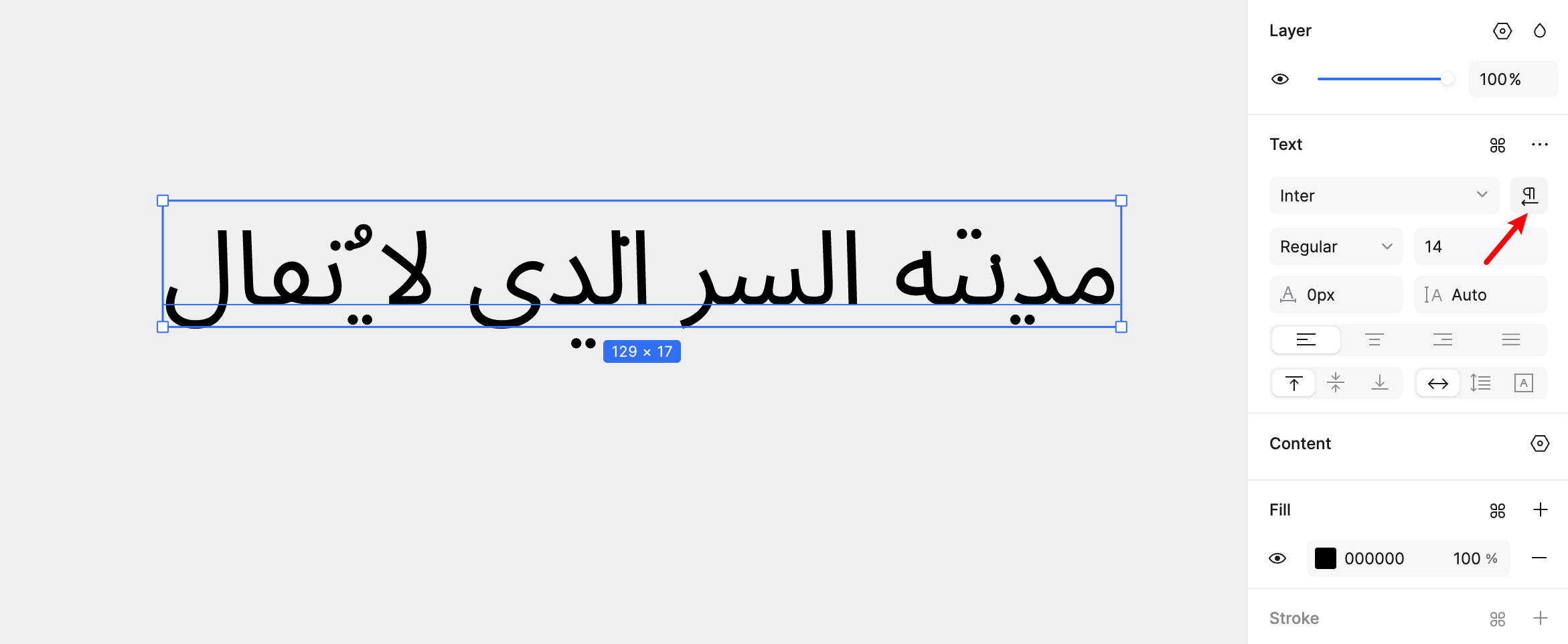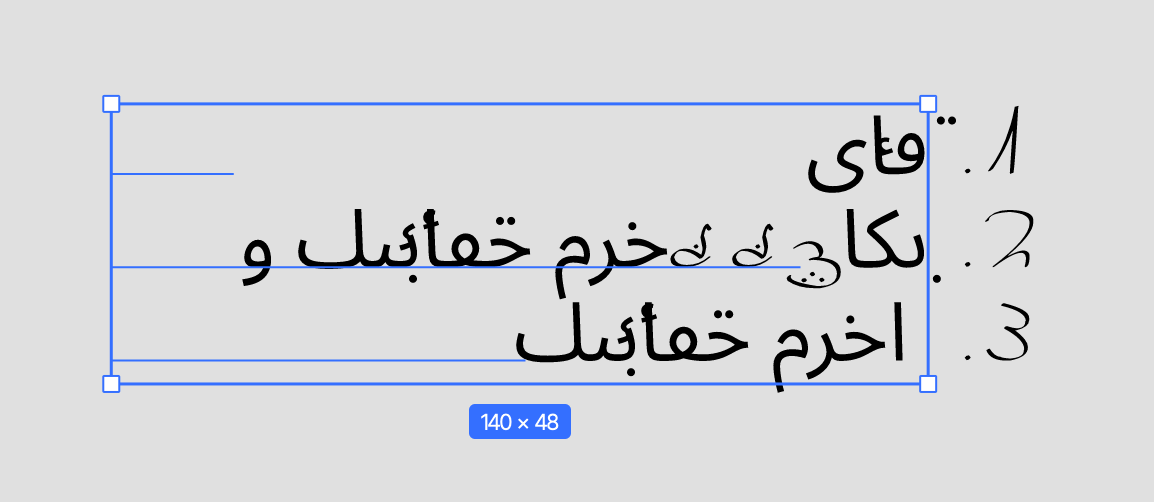In a world where globalization and digitalization blend deeply, text— as the core carrier of information—faces tough challenges: multiple languages, cultures, and scenarios.
To let users read and create more freely and inclusively, Pixso 2.0 launches a powerful feature: Bidirectional. It works seamlessly with Sketch, fits multilingual editing and complex layouts, and gives global teams better collaborative creation experiences.
What is Bidirectional (BiDi)?
RTL (right-to-left) refers to languages or writing systems that start from the right to left. For exapmle, Arabic, Uyghur, Hebrew, Persian, and Urdu are common RTL. In contrast, languages like English, Spanish, and Chinese go the other way—left to right (LTR). Now maybe you have guessed it -- A bidirectional text contains two text directionalities, right-to-left (RTL) and left-to-right (LTR).
Pixso 2.0’s new feature Bidirectional supports both RTL and LTR display orders. It even lets you mix them in the same text box, ensuring different languages show correctly on the same page. This is key for multilingual product design and localization.
Use Cases for Bidirectional
Bidirectional puts you in control of text flow, making layouts flexible and nice. It handles multilingual designs easily, boosting your work’s professionalism and look.
📌 In product design, you’ll use Bidirectional in scenarios like:
1. Interface Layout Mirroring
When a product supports both LTR and RTL languages, the entire interface—navigation bars, menus, button orders—must mirror based on the language’s direction. Bidirectional text ensures this shift feels natural.
2. Text Input & Display Areas
Chat windows, comment sections, email editors—anywhere users type—need to handle mixed LTR and RTL text. Bidirectional support lets users type and read multiple languages smoothly, no awkward breaks.
3. Mixed Text Content
RTL interfaces often include LTR elements: English phrases, numbers, or proper nouns. Bidirectional text arranges these seamlessly, keeping the layout clean and easy to read.
4. Control & Component Direction
Input boxes, dropdowns, scrollbars, pagination—these adjust their alignment and interaction logic automatically with bidirectional text. Buttons and menus flow with the language, not against it.
How to Apply Bidirectional?
1. Switch Text Direction
When you select a bidirectional text box, a button to switch text direction will appear in the text panel and you can click it to switch between LTR and RTL.

2. Editing RTL Text
• Cursor movement: In RTL text, sliding left moves the cursor to the end of the next character. Sliding right goes to the start of the one before. It is totally opposite of LTR.

• Inserting text: Type where the cursor blinks, and new words pop up to its right. Feels natural for RTL flow.

• Line breaks: RTL lines start on the right and end on the left. Hit enter on the left side, and the cursor stays put at the text box’s left edge.

• Deleting text: Press delete, and it removes the character that came before. In RTL, that means wiping what’s to the cursor’s right.
• Lists: RTL text shows ordered and unordered list markers on the right. LTR text shows them on the left—automatically adjusted for readability.

Key Advantages of Bidirectional
1. RTL Language Support
It works flawlessly with right-to-left languages like Arabic and Hebrew. No more awkward layouts. Text flows naturally, making multilingual product design easily.
2. Sketch Compatibility
Import or export bidirectional text without losing formatting. File transfers stay smooth, with zero hiccups during migration.
3. Mixed Layouts Made Easy
Bidirectional text lets you mix LTR and RTL in the same text box. Complex layouts? Done. No need to split text or compromise on design.
Global design shouldn’t get stuck on language directions. Pixso 2.0’s Bidirectional feature knocks down those barriers, which is smooth, simple, and ready to make every multilingual project shine. Dive in, try BiDi, and watch your team create without limits.





